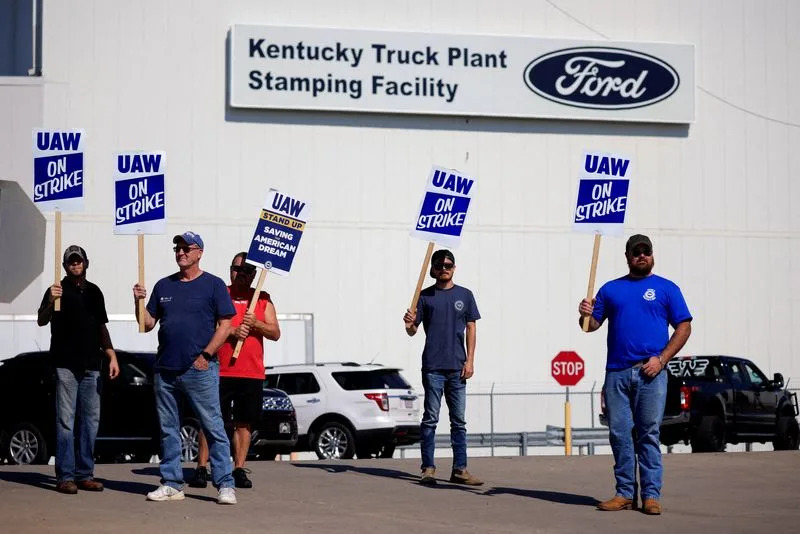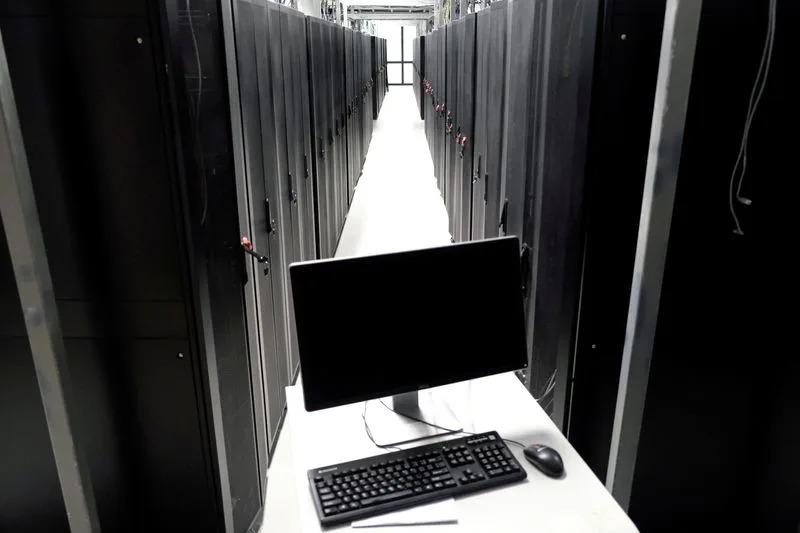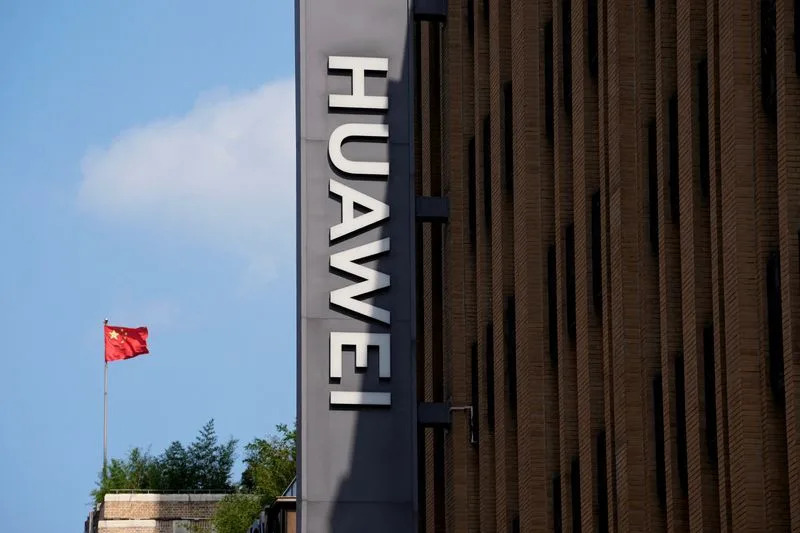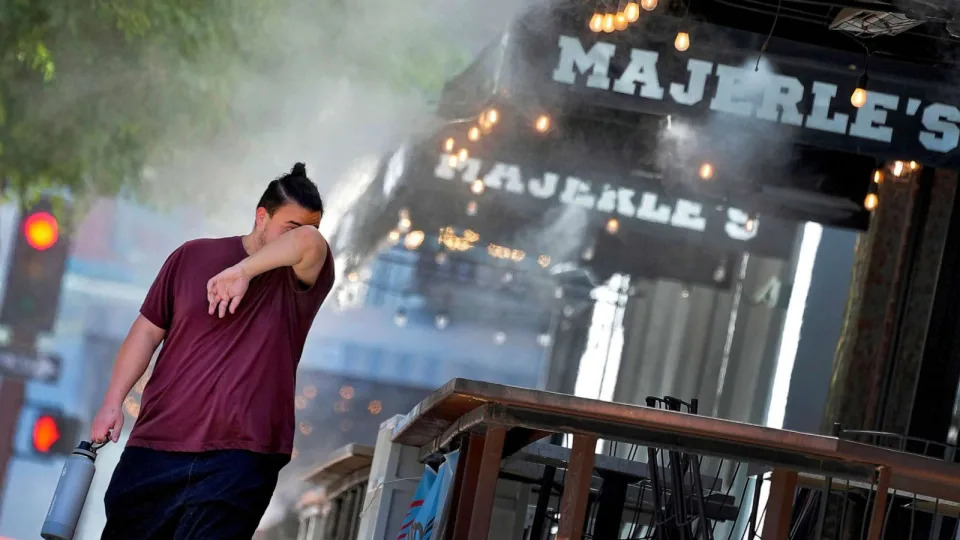Reuters
Ford, UAW reach tentative deal to end strike including record pay raise
Joseph White and David Shepardson – October 25, 2023



FILE PHOTO: United Auto Workers (UAW) local 862 members strike outside of Ford’s Kentucky Truck PlantIn this article:
(Reuters) -Ford Motor and United Auto Workers (UAW) union negotiators reached a tentative labor deal after a six-week strike, UAW President Shawn Fain and the automaker said on Wednesday, agreeing a 4-1/2-year contract with a record pay boost.
The deal, which needs approval by union leaders and members, would be the first settlement of strikes by 45,000 workers against Ford, General Motors and Chrysler-parent Stellantis that began Sept. 15.
“We told Ford to pony up and they did,” Fain said in a video post on Facebook, adding that the strike at Ford “has delivered”.
Fain said the UAW reached a historic agreement with Ford, including a 25% wage increase over the life of the contract. Ford workers will receive an immediate 11% wage hike. Including compounding and cost of living, worker pay will rise about 33% to over $40 an hour over the life of the contract.
In addition to the general wage hike, Fain said the lowest-paid temporary workers would see raises of more than 150% over the contract term and employees would reach top pay after three years. The union also won the right to strike over future plant closures, he said.
The UAW also succeeded in eliminating lower-pay tiers for workers in certain parts operations at Ford – an issue Fain highlighted from the start of the bargaining process, wearing T-shirts with the slogan “End Tiers.”
The Ford contract would reverse concessions the union agreed to in a series of contracts since 2007, when GM and the former Chrysler were skidding toward bankruptcy, and Ford was mortgaging assets to stay afloat.
“We know it breaks records,” Fain said in a video address Wednesday night. “We know it will change lives. But what happens next is up to you all.”
The UAW was preparing to strike at a key Ford facility in Dearborn this week if it had not reached agreement after striking at additional GM and Stellantis facilities this week.
But in an unexpected gesture to Ford, UAW-Ford Vice President Chuck Browning said in a video Wednesday that Ford workers now on strike should return to their jobs during the coming ratification process. That means production of Ford Super Duty pickups, Ford Bronco and Explorer SUVs and Ranger trucks could restart this week.
Ford confirmed the news. “We are pleased to have reached a tentative agreement on a new labor contract with the UAW covering our U.S. operations,” Ford CEO and President Jim Farley said in a statement.
If the Ford contract is ratified, it would set the standard for bargaining at GM and Stellantis and expire on April 30, 2028.
In statements, GM and Stellantis said Wednesday they are working to secure agreements as soon as possible.
“This lays the groundwork for the next two contracts and they should fall in line fairly quickly because all three were within a narrow gap of each other,” Sam Fiorani, vice president of global vehicle forecasting at AutoForecast Solutions.
“The strike so far has been painful for everybody and knowing what it takes to get a signed contract should bring them to the table much quicker,” he said.
The UAW ratcheted up pressure on the automakers by striking at each company’s most profitable plant – GM’s Arlington, Texas assembly plant, Ford’s Kentucky heavy-duty pickup factory and Stellantis’ Ram pickup plant in Sterling Heights, Michigan.
Total economic losses from the auto workers’ strike have reached $9.3 billon, the Anderson Economic Group said earlier this week.
The UAW’s campaign for a record contract converged with union efforts in Hollywood and at delivery giant UPS to win big pay increases. It also became the focus of attention by U.S. President Joe Biden and Republican rivals who see Michigan and other auto states as pivotal to their 2024 campaign strategies.
Biden joined Fain on a picket line last month, and praised the tentative agreement in a statement Wednesday night as a “testament to the power of employers and employees coming together to work out their differences at the bargaining table.”
Absent from Fain and Browning’s summary of the contract terms Wednesday was mention of future pay and unionization at new joint-venture electric vehicle battery factories the Detroit Three are building with Asian partners.
Because they are owned by separate corporate entities, the automakers did not have to include those factories in this round of bargaining. Fain had pushed for assurances that battery plant wages would be comparable to wages at assembly plants, and expressed concern that UAW jobs at Detroit Three combustion powertrain plants would be lost over time to non-union battery operations.
(Reporting by Mrinmay Dey in Bengaluru; Writing by Peter Henderson; Additional reporting by Abhirup Roy; Editing by Cynthia Osterman and Christopher Cushing)












